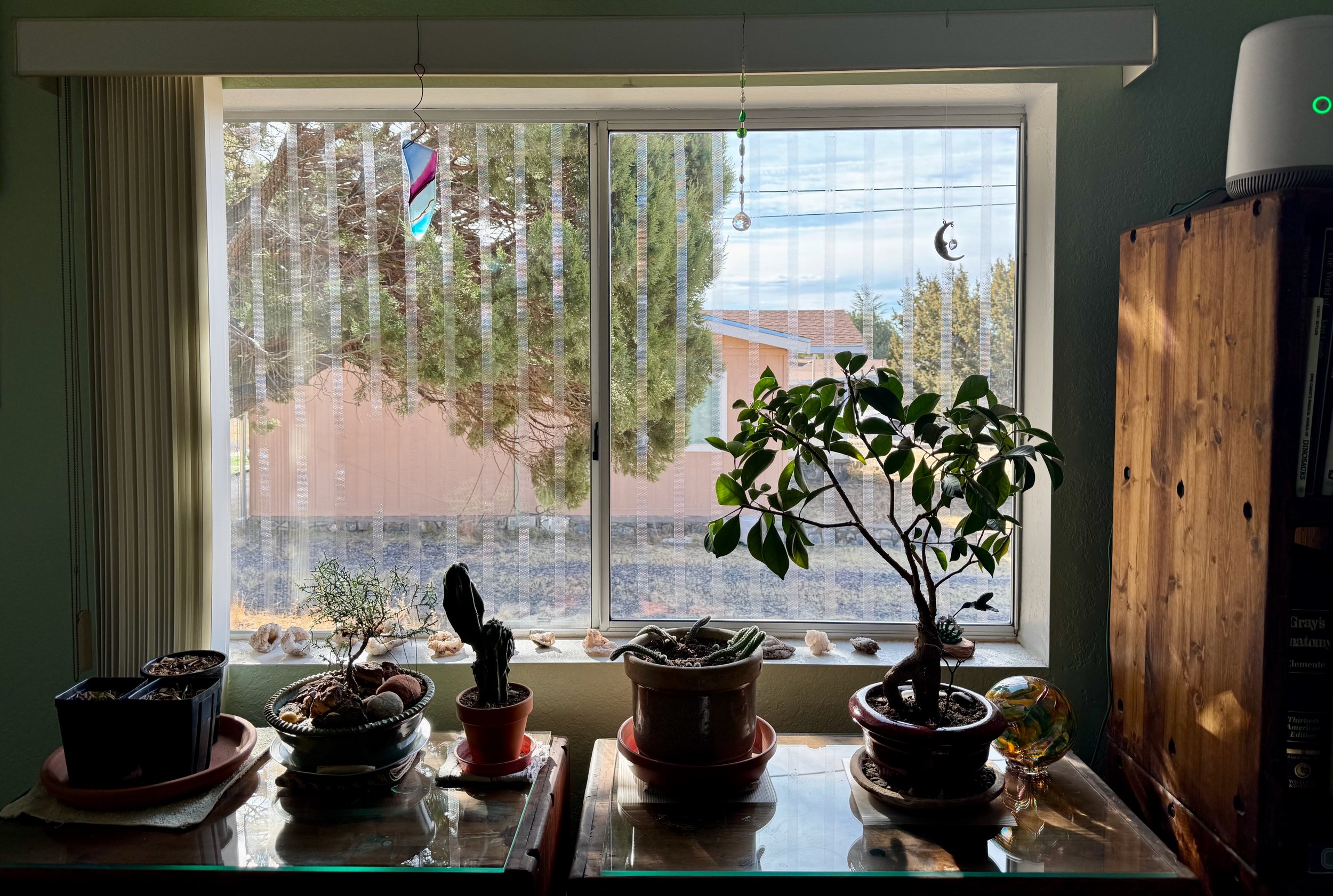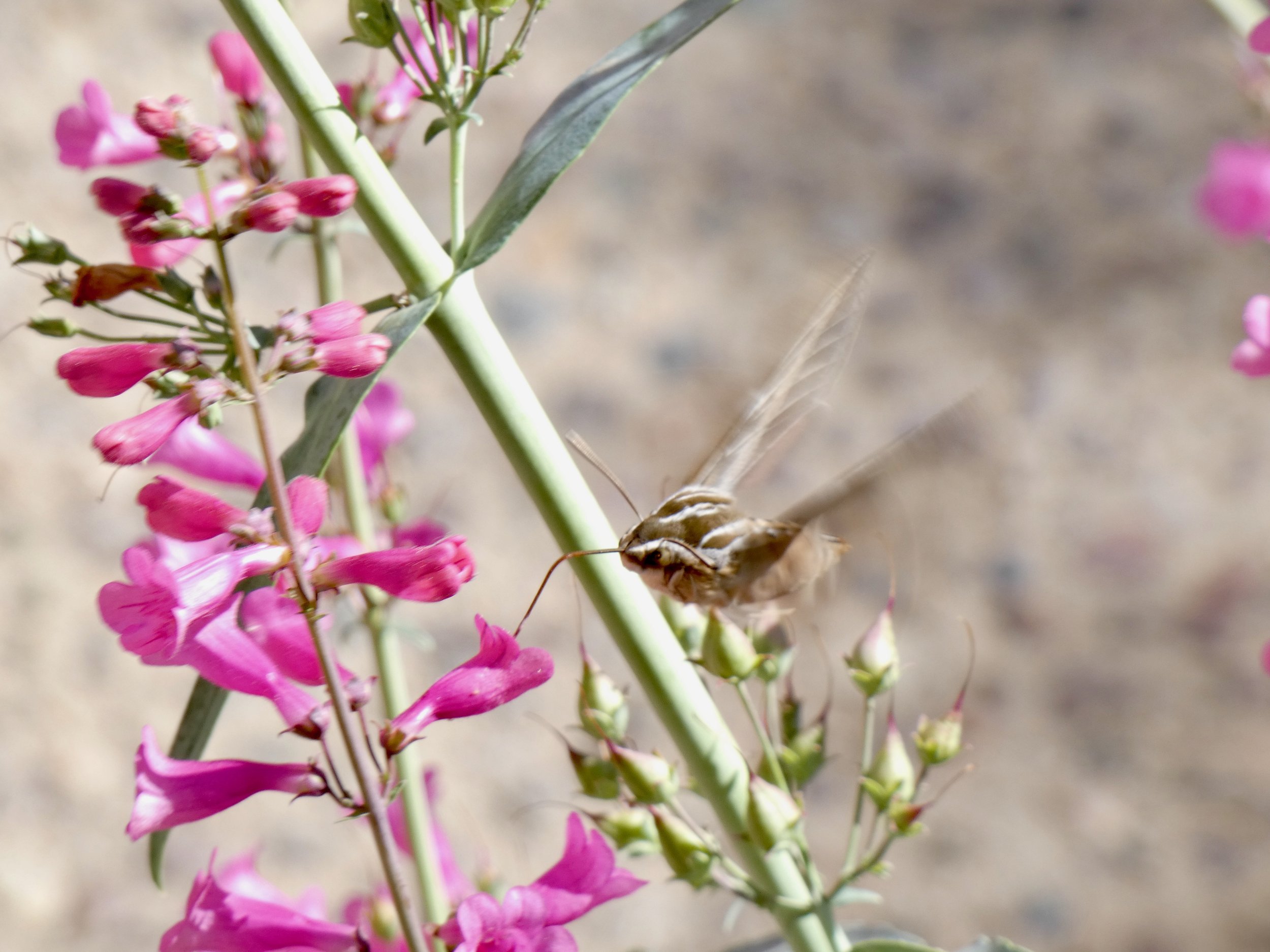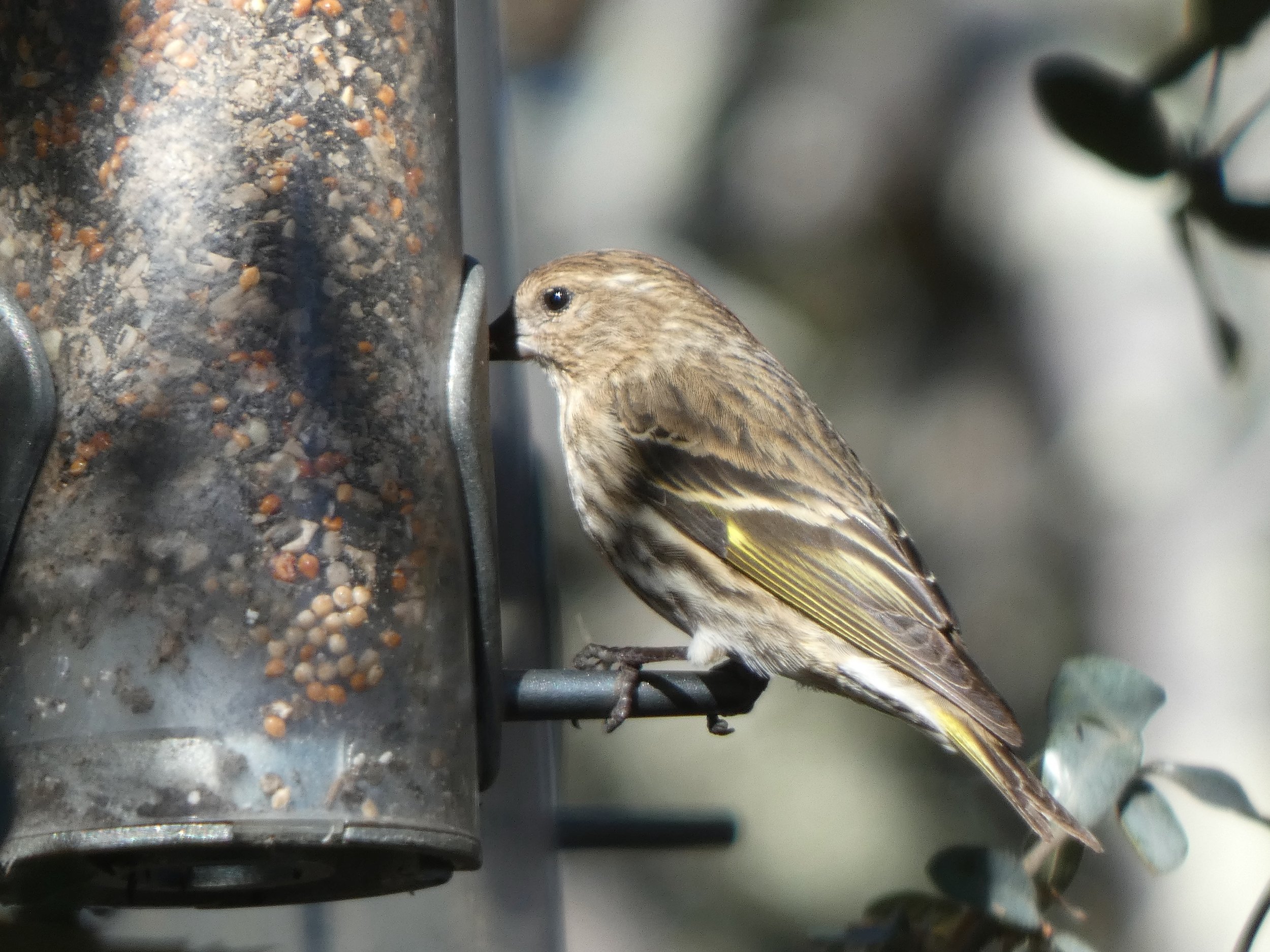Creating Bird-Friendly Habitats at Home
A landmark study published in 2019 showed the loss of nearly 3 billion breeding birds in North America since 1970. We can all be a part of preserving and restoring habitats for the birds we love. Read below about simple actions you can take at home.
Prevent Window Collisions
Clear tape spaced 2” apart on a chapter member’s window helps deter bird collisions
Tragically, window collisions account for over one billion bird deaths annually in the United States (2024 Wilson Journal of Ornithology). Residential homes account for nearly half of this total.
Birds can’t distinguish reflection from open flyways. They need strong clues on or around glass to warn them that it’s there.
Fortunately, there are many affordable products and simple DIY methods available to make glass visible to birds, including grids, paint, decals, dot tape, “zen curtains,” screens, netting, and film. See sidebar for specifics.
Stay tuned on our Events page for information about a workshop in June 2025 to help prevent window collisions!
Follow these research-based guidelines for effective window markings
Apply markings in a dense pattern, leaving no gaps more than 2”x 2”. If gaps are any larger, birds may try to fly through them and still hit the window.
Apply markings to the outside surface of the glass, NOT the inside. Reflections of trees or sky on the outside of the window may render any internal window markings invisible.
Markings must be of high contrast so that they stand out on the window.
Each marking should be no less than 1/4 inch in diameter.
Markings must cover the entire surface of the glass. Single decals, for instance, are ineffective.
Source: Fatal Light Awareness Program
American Bird Conservancy: Preventing Bird Collisions at Home
Cornell Lab: Why Birds Hit Windows—and How You Can Help Prevent It
Humane Society of the United States: Make Your Windows Bird-Safe
National Audubon Society: DIY Deterrent Methods and Relative Costs
How to help a window collision victim
Using a towel, gently cover and catch the bird, placing it in a paper bag or cardboard box with air holes. Close securely. Put the bird in a quiet, warm, dark place away from humans and pets. Contact the nearest wildlife rehabilitator for help.
Check every 15- 30 minutes, or when you hear rustling inside the container, being careful not to open the container enough to allow the bird to escape. (It’s no fun trying to get a flying bird out of a building!)
If the bird seems ready to fly, carry the container outside, open it and step out of the bird’s view. If truly recovered, the bird will not hesitate to fly away without so much as a thank you. If it doesn’t fly close the box and bring it back indoors. If there is no improvement within an hour contact your nearest wildlife rehabilitator.
NOTE: Raptors (hawks, kestrels, or owls) can be dangerous for inexperienced persons to handle, even when stunned. It may be best to monitor the bird from a distance. In some cases a local veterinary hospital may be able to help.
Establish Gardens with Native Plants for Food and Shelter
Photo: Heidi Erstad
A natural habitat is one of the best things you can provide for birds and other wildlife. Here in southwestern New Mexico, the Gila Native Plant Society and local native plant nurseries (see sidebar) can help you create a bird-friendly garden using plants that will feed and shelter wild birds.
Removing water hungry non-natives can help you conserve water as well. This is an excellent alternative way to help birds for those unable to, or not inclined to put up bird feeders.
National Audubon Society: Find Bird-Friendly Native Plants & How to Make Your Yard Bird-Friendly
Local Native Plant Nurseries
Keep Dark Skies Dark
Stock Photo
You have likely heard or read about the Dark Sky Initiative or Lights Out programs. The projects came about as scientists began to recognize the range of negative impacts artificial lighting has on birds.
Billions of birds migrate every year in the spring and fall, the majority of them flying at night. Bright artificial lights and skyglow can disorient birds, causing them to collide with buildings or windows. Birds also expend precious energy in this confusion. Reducing your outdoor lighting by using motion sensors to trigger lights when needed or converting outdoor lights to downlights so you have the light you need but that light doesn’t reach the sky above.
Bird Cast: How you can go Lights Out!
Dark Sky International: Responsible Outdoor Lighting
Feed Birds Safely
Pine Siskin. Photo: Heidi Erstad
Feeding birds can be a lot of fun, and seeing birds at your feeders can have a positive impact on your mood. But, if you decide to feed birds, it is important that you do so safely to prevent spread of disease and not draw unwanted species to your property.
Keep feeders and water sources clean.
Soak bird baths and feeders with a solution of 9 parts water to 1 part bleach.
Scrub away any food particles with soap and water before soaking. Bleach can’t penetrate those particles.
Clean at least monthly, especially in wet weather when seed tends to mold is should be part of your routine. Let feeders dry before replacing them.
Rinse and scrub bird baths and other water sources with 9 parts water to one part vinegar. Don’t use soaps or cleansers as they can strip bird feathers of essential oils,
Take feeders down if you see any evidence of sick birds.
Many diseases are highly contagious, so it is important to remove feeders so the birds don’t congregate.
Clean the ground below feeders
Rake or shovel feces and debris, especially when the food has become spoiled. This will have a secondary advantage of not encouraging rodents to feed under your feeders. If there is snow on the ground, just scrape off the top layer.
Spread feeders about to reduce bird concentrations
Space between feeders around your property to reduce contact between sick birds and healthy ones.
Cornell Project Feederwatch: Safe Feeding Environment
Wild Birds Unlimited: Responsible Bird Feeding
Limit or Eliminate Use of Pesticides
It’s easy to not harm birds, as well as insect pollinators such as butterflies and bees! Simply avoid using pesticides and harsh cleaning products, like bleach, anywhere outside of your house. Pesticides include all types of insect control (insecticide), rodent control (rodenticide) and weed control (herbicide) products. Stick to mild biodegradable soaps for outdoor cleaning of lawn furniture, etc. Make your own safe insecticides using the recipe below or try commercially-available less toxic insecticides; Neem oil, Diatomaceous Earth, and Safer®Brand products.
Home Made Plant Spray Recipe
1.5 tsp mild soap in a qt of water
1 tbl mild soap in 1 cup vegetable oil
Mix, dilute 2 tsp per qt of water
Add 1 tbl Chili powder to either of above
Add pureed then filtered garlic in water
Make your own herbicides, less toxic than Round-up or other weed killers (but don’t get it on desirable plants)
Salt spray: 1 part salt dissolved in 3-8 parts hot water with a drop of mild soap
Boiling water: poured directly on the undesired plant
Borax Spray: 1 tbl 20 Mule Team borax in 2 cups water
Keep Indoor Cats Indoors
Stock photo
Domestic cats make wonderful pets, but when allowed to roam outdoors, these introduced predators have serious consequences.
Cats have been introduced into new habitats across the globe with terrible results. Outdoors, cats are a non-native and invasive species that threaten birds and other wildlife, disrupt ecosystems, and spread diseases.
Now numbering well over 100 million in the United States, cats kill approximately 2.4 billion birds every year in the U.S. alone, making cat predation the largest human-caused mortality threat to birds.
The American Bird Conservancy Cats Indoors Program educates the public and policy makers about the many benefits to birds, cats, and people when cats are maintained indoors or under an owner's direct control. In addition to advocating for responsible pet ownership, we also oppose Trap, Neuter, Release (TNR) for feral cats because of the persistent and severe threats posed by feral cat colonies.
Drink Bird-Friendly Coffee
More than 70 species of North American migratory songbirds overwinter in coffee and cocoa plantations in the tropics, including orioles, warblers and thrushes. However, native trees are often eliminated from farms to grow the coffee and cocoa leaving little to no habitat for migratory birds or tropical wildlife.
If you can afford it, opt for beans that are certified shade-grown, which are stamped with seals such as “Rainforest Alliance Certified” or “Bird Friendly.” Both require farmers to maintain or restore canopy cover and prohibit harmful pesticides, which limit prey for birds.
National Audubon Society: How to Choose a Bird-Friendly Coffee








